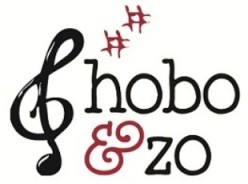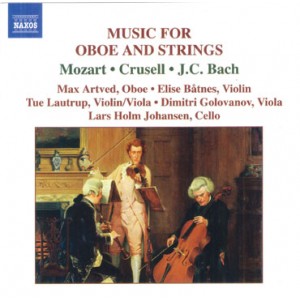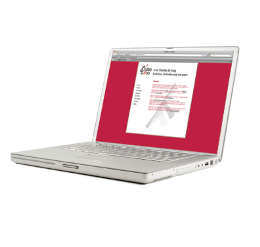Track Listing:
Mozart, Wolfgang Amadeus
Oboe Quartet in F major, K. 370
Artved, Max, oboe
Batnes, Elise, violin
Lautrup, Tue, viola
Johansen, Lars Holm, cello
1. I. Allegro 00:06:33
2. II. Adagio 00:03:20
3. III. Rondeau: Allegro 00:04:22
Crusell, Bernhard Henrik
Divertimento in C major, Op. 9
Artved, Max, oboe
Batnes, Elise, violin
Lautrup, Tue, viola
Golovanov, Dimitri, viola
Johansen, Lars Holm, cello
4. I. Allegro 00:03:40
5. II. Andante poco Adagio 00:04:30
6. III. Allegro 00:01:45
Bach, Johann Christian
String Quartet in B flat major, B. 60 (arr. as oboe quartet)
Artved, Max, oboe
Lautrup, Tue, violin
Golovanov, Dimitri, viola
Johansen, Lars Holm, cello
7. I. Allegro 00:05:45
8. II. Rondeau: Grazioso 00:04:37
Mozart, Wolfgang Amadeus
String Quintet in C minor, K. 406 (arr. as oboe quintet)
Artved, Max, oboe
Batnes, Elise, violin
Lautrup, Tue, viola
Golovanov, Dimitri, viola
Johansen, Lars Holm, cello
9. I. Allegro 00:08:11
10. II. Andante 00:03:57
11. III. Menuetto in canone 00:04:02
12. IV. Allegro 00:06:10
Total Playing Time: 00:56:52
In 1777 Mozart set out from Salzburg, accompanied only by his mother, to seek his fortune elsewhere. His father Leopold, who had guided his son’s career, was compelled to remain at home, out of necessary prudence, while Mozart himself had been able to travel only by resigning from the court musical establishment of the ruling Archbishop. Mozart’s journey took him, by the end of October, to Mannheim, the seat of the Elector Palatine and a city that boasted the most famous orchestra in Europe. He was clearly delighted at his reception by musicians of the Mannheim court. In his second letter home to his father he gives an account of his visit to the house of the director of court instrumental music, Christian Cannabich. There he met other musicians, including an oboist whose playing he praises and to whom he has given a copy of his oboe concerto, although he has forgotten the man’s name. In later letters he identifies him as Friedrich Ramm. The four months in Mannheim brought no offer of employment from the Elector, and Mozart planned to move on to Paris, at first hoping to travel with Ramm and other wind players from Mannheim, for whom he was to write a sinfonia concertante. He eventually travelled to Paris with his mother in March, but, for whatever reason, failed to find the patronage he needed. In July his mother fell ill and died, and his father, anxious as ever about his son, urged him to return to Salzburg, where he had procured for him the position of court organist. After long delays, the result of a return to Mannheim, where he renewed his attentions to the young singer Aloysia Weber, and time spent in Munich with his cousin, Mozart was back in his detested Salzburg by January 1779. In 1780, however, he was able to renew his association with the Mannheim musicians who had moved with the Elector to Munich, his capital as Elector of Bavaria, a position inherited on the death of his predecessor. Here Mozart was commissioned to write an opera for the court, Idomeneo.
It was at this time, probably in January 1781, that he wrote his Oboe Quartet in F major, K370, for Ramm. He was soon to be summoned to Vienna by his patron, the Archbishop of Salzburg, and all too soon to quarrel with his and his father’s patron, to spend his last ten years in precarious independence in Vienna. The quartet opens with an Allegro, the oboe stating the first subject and leading the way to a secondary theme, introduced by the violin. Instruments enter in imitation of each other in the central development, duly followed by a final recapitulation. The strings open the D minor Adagio, in which the oboe adds an embellished upper part. The final Rondeau allows the oboe the first statement of the principal theme, echoed by the violin, providing the framework for contrasting episodes that would have allowed Ramm full scope for the display of his ability, so much admired by the composer.
Mozart embarked on independent life in Vienna with a degree of optimism, marrying, without his father’s approval, the younger sister of the singer who had so enchanted him in Mannheim, and contributing to the German operatic repertoire encouraged by the Emperor a new Turkish Singspiel, Die Entführung aus dem Serail. His Serenade in C minor, K388, for oboes, clarinets, horns and bassoons, was probably written in 1782 and it was to this work that he turned in 1787 or 1788 to provide the basis of the third of his set of three string quintets, offered for subscription in April of the latter year. By now Mozart’s circumstances had changed. His father had died in 1787 and his own financial difficulties were mounting in the political and economic problems of the time. He refers to the quintets, later to be published by Artaria, in a letter to his fellow-mason Michael Puchberg seeking loans to tide him over. The Quintet in C minor, K406, heard in a version for oboe, violin, two violas and cello, opens with a figure based on the ascending triad of C minor, followed in the fourth bar by a characteristic descending interval that is to return. This strong opening, in which all join, is answered more gently, and this first subject is led to the E flat major second, preceded by an emphatic unison from the whole ensemble. The relatively short central development brings surprises, breaking off on a second occasion before the return of the first subject in a final recapitulation. The E flat major triple metre Andante brings customary embellishment in the upper part and leads to a Menuetto in canone, in which there is a canon at first between oboe and cello, and a C major trio in which the canon, now between the upper instruments, is inverted. The last movement is a set of variations that in one passage, at least, shows traces of its origin. The theme returns finally in C major to bring the work to a conclusion.
The clarinettist and composer Bernhard Henrik Crusell was born in the Finnish town of Uusikaupunki (Nystad) in 1775, the son of a book-binder. He had his first instruction in the clarinet at the age of eight from an army player and was encouraged by an officer to join the band of the Queen Dowager’s Regiment, which, in 1791, in Stockholm, he conducted, before appointment to the court musical establishment in 1793 as first clarinettist. Study with the Abbé Georg Joseph Vogler, the Court Kapellmeister, and of the clarinet with Franz Tausch in Berlin, brought a career as a soloist, with a visit to Paris in 1803 that allowed composition lessons with Berton and Gossec, and further concert tours abroad. In Stockholm in 1818 he was appointed musical director of the two Royal Grenadier Regiments, a position he held until his death in 1838. His varied compositions include works for his own instrument, an opera, and chamber music, and he was also responsible for Swedish translations of various opera libretti. His Divertimento in C major, Op. 9, was written in 1822, scored for oboe and string quartet. The opening Allegro, with due modulation to the dominant, frames a central C minor Andante poco Adagio, returning to be completed by a rapid final section. The work is adept in its handling of the oboe, on which demands of virtuosity are made, as it leads the way, linking the principal sections of the piece.
The youngest son and eleventh of the thirteen children of Johann Sebastian Bach, Johann Christian Bach was born in Leipzig in 1735 and presumably had his early musical training under his father, whom he assisted as the latter neared the end of his life. On his father’s death in 1750 he joined his brother Carl Philipp Emanuel in Potsdam, and in 1754 moved to Italy, studying with Padre Martini, becoming a Catholic, and establishing himself in Milan, where, in 1760, he became second organist at the Cathedral. His growing reputation as a composer of Italian opera led to an invitation in 1762 to London, where, like Handel before him, he enjoyed royal patronage and a career as a composer of Italian opera and as a versatile contributor to the musical life of the city. In later years he experienced financial difficulties, as fashions changed. He died in London in 1782, mourned by Mozart in Vienna, who would have remembered his kindness at their first meeting in London in 1764. Much of Johann Christian’s chamber music is varied in scoring, often combining wind and string instruments. His Oboe Quartet in B flat major was issued in August 1776 by Sieber in Paris, as the first of a set of concertante string quartets by J.C. Bach and his friend and colleague in London, the gamba-player C.F. Abel. This replaced a quartet by Giardini, orchestral leader at the King’s Theatre, in an otherwise similar set of six quartets published in London. It appears in a manuscript in Genoa in a version for oboe and strings and in another version there, in E flat major, for cor anglais and strings, while the Brussels Bibliothèque Albert 1er attributes the work to Haydn, as some others have done. The pleasing first movement in sonata-allegro form is followed by a Rondeau that follows Bach’s normal practice in offering a second episode in the relative minor key, the whole movement suggesting, in its metre, a minuet with two trios.




































